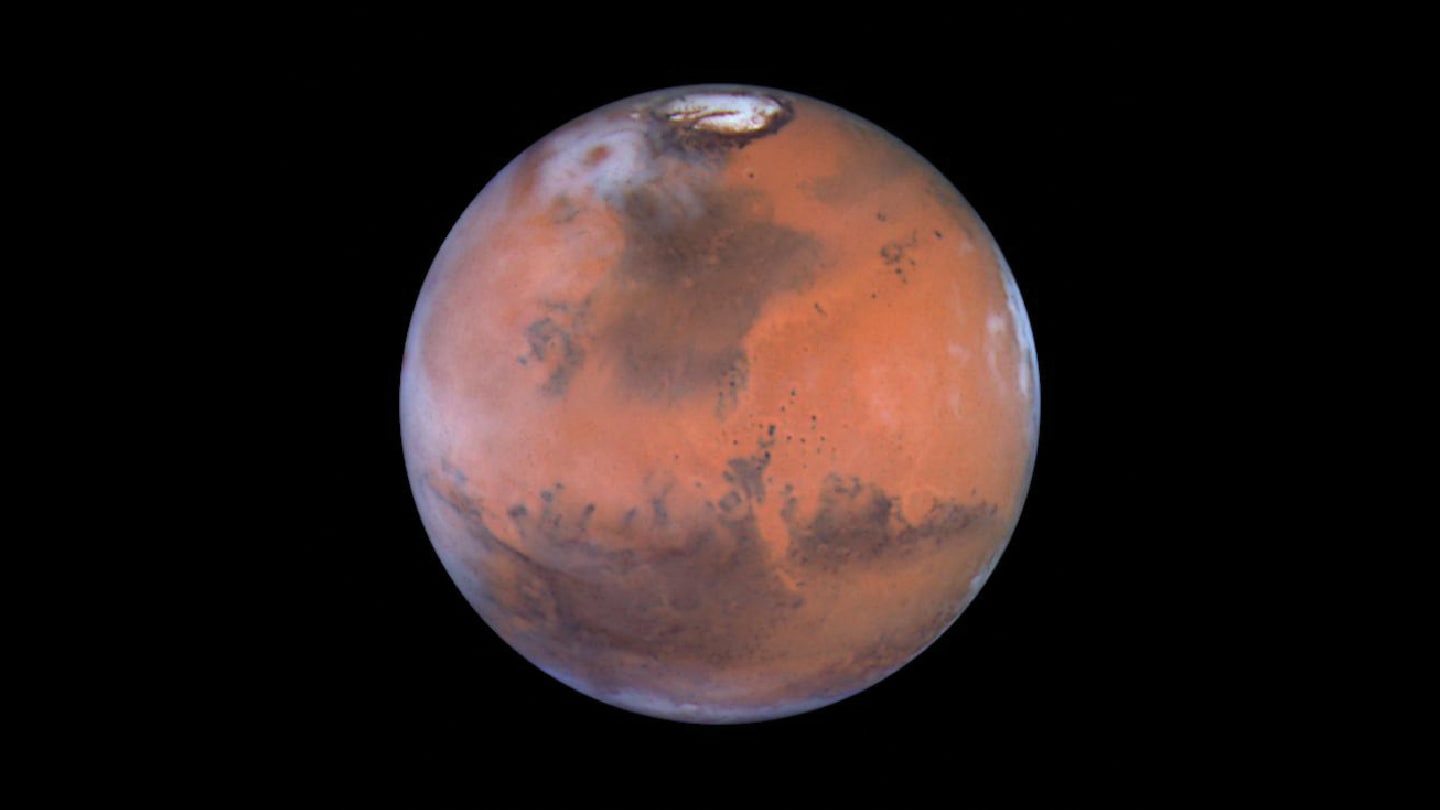
A mysterious light signature captured by NASA’s orbiting spectrometer more than a decade ago has finally been matched to a real-world mineral – a breakthrough that could shed light on the Red Planet’s potential to support life.
The faint but distinct 2.236-micron spectral band was first spotted in 2010 at two sites: Aram Chaos and the Juventae Plateau. But the compound responsible remained unidentified – until now. Researchers have matched the spectral fingerprint to ferric hydroxysulfate, a heat-formed mineral synthesized in lab conditions mimicking Mars.
“The data that comes out of the spectrometer is not usable the way it is,” said Mario Parente, associate professor of electrical and computer engineering at UMass Amherst and one of the authors of the paper, in a press release. “We have to calibrate the data, correct the data, remove the effect of the atmosphere.”
The signal was captured by the Compact Reconnaissance Imaging Spectrometer for Mars (CRISM), which detects how light interacts with minerals from orbit. But decoding that signal is tricky. “There are scattering molecules and gases that absorb light in the atmosphere,” Parente said. “For example, on Mars, there is an abundance of carbon dioxide, and that will distort the data.”
Parente’s lab developed advanced atmospheric correction algorithms – powered by deep learning AI – to clarify the spectral signal and pinpoint new locations of the mineral across Mars. His team has also mapped Jezero Crater, the site where NASA’s Perseverance rover is now searching for signs of ancient life.
Lab experiments revealed that ferric hydroxysulfate forms in acidic, oxygenated environments at 50–100 °C – conditions consistent with hydrothermal or volcanic heating. That makes it a geochemical clue pointing to Mars’ warm, wet, and possibly habitable past.
“This mineral puts a lot more nuance on what was going on,” Parente said. “Parts of Mars have been chemically and thermally active more recently than we once believed.”




